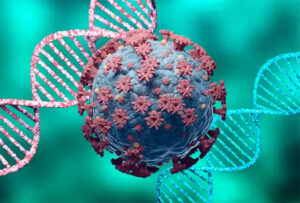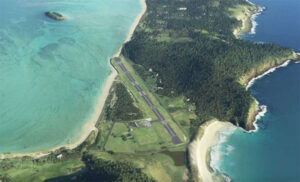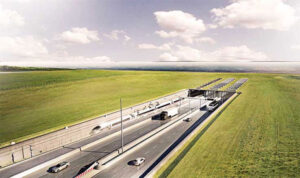
The population in Sri Lanka is 21 million. Malnutrition is 22%. 33% of the population does not have a nutritious diet. The Global Climatic Risk Index 2018 scientifically explains the effects of storms, floods, and war waves on extreme weather conditions throughout the world. The report designs the Germanwatch Development and Environment Watch on the Germans annually. From 1997 to 2016, they have very clear data and records.
Due to extreme climatic events in 2016, Honduras, Haiti and Myanmar were badly affected. The 13th Amendment to the 2018 Code has been announced. According to the information, the developing world is at greater risk of developing countries. It also includes scientific analysis of future risk. Some disasters are growing year by year. At the Climate Summit held in Fiji in 2017, attention was drawn to the above risks. The Paris-Climate Common Consensus requires that all government priorities be set for a global timeframe for adaptation.
According to the Global Climate Risk report, Sri Lanka is in the second place in 2019. Haiti, Zimbabwe, Fiji, Vietnam and Sri Lanka are in the same ranking. Puerto Rico is at risk because of terrorist attacks in the years 2018 – 2019. Sri Lanka has been identified as an extreme climatic risky state.
Climatic risk
India has taken the sixth place. United States, Taipei, Macedonia, Bolivia are in the 12th place. In compiling the report, the decline in mortgages, the financial damage, and the Gross Domestic Product (GDP) dropped to 100,000 from the population. Due to extreme weather conditions, over the past twenty years, there have been 524,000 lives in the world. There are about 11,000 extreme climatic events.
The global economy is hit by a $ 3.16 trillion loss. In the 1997- 2016 report, Haiti, Myanmar, Nicaragua, the Philippines, Bangladesh, Pakistan, Vietnam, Thailand, the Dominican Republic and India are in the forefront. In the context of Climatic Risk, the adoption of the 2030-2050 adaptation is a mandatory activity in parallel with the United Nations Environmental Program.
According to the International Monetary Fund, the country is approaching a low middle-income economy. The above growth depends on good governance and reconciliation among communities. The World Food Program emphasizes food security, equality and socio-economic development. Global Hunger Index (Global Hunger Index (GHI)} according to the Global Hunger Index (LHI), has ranked 84th among 119 states.
According to the International Food Policy Research Institute (IFPRI), one out of every five children is 1/5 due to hunger and a high and unborn child. These include absorption of indicators for the research, aging of children, the height and weight of children, and the infant mortality rate. The other countries in the South Asian region ranked India 100, Nepal 72, Bangladesh 88, and Afghanistan 107.
The situation in Sri Lanka
Seventy-one years after independence, after three generations, can we be satisfied with the social realities that we have achieved in terms of economic development? Due to the extreme weather conditions in the South Asian region, people often suffer from severe droughts and heavy rains.
During the past few years, people were at risk of extreme weather conditions in Sri Lanka. There was a water shortage in nearly 20 districts due to the drought in the past. Also, the number of death toll victims during the rainy season is seen annually. Severe drought and unmanageable floods also result in an increase in food prices and a dearth. Global Hunger Index (GHI) and International Food Policy Research Institute (IFPRI) emphasized that developing countries should be fully focused on the following guidelines for developing countries by 2025: a.
01. The ability to get food for every citizen throughout the year.
02. The ability of every school-child to have access to nutritious food.
03. Increasing the nutritional status of every woman with pediatric chores and reproductive capacity by the year 2025.
04. Strengthening the disadvantaged community groups and livelihood of small farmers and safeguarding food security throughout the year.
05. Completion of Hunger by the year 2025.
Conclusions and suggestions
We are all children of nature. It is necessary for the warm sun to pass through the cool, flowing and flowing streams of the Mahogala. It is essential for the life of the sun. The diversity of nature is the basic foundation for the survival of plant and animal species. The heat of the sun, the moon’s cooling, the blue sky, the water, the water, the freshness of the atmosphere, the biological species and the nature.
The principle of cultural harmony is the respect and love of nature that belongs to all plants and animals. Sensitization and anxiety develop in the human being by sharing life with others. Diversity, equality and prestige are the heartbeat of the culture. Reconciliation is not only a behavioral pattern among community and cultural groups. Reconciliation is a relationship between the whole plant and animal life and the continuity of unbroken continuation with every kind of nature.
As well as the criteria set by the international organizations and the issues that need to be addressed immediately by Sri Lanka, the attention of the people is an essential step. Climate change suddenly generates extreme weather conditions that are at the heart of the future and of the present-day world. Sri Lanka (2019) is the second largest country among the nations affected by this phenomenon. One does not have the ability to control the active activity of nature. But the ability to minimize disasters and maintain co-operation with nature should be adhered to timely. You must give up your greedy desires. Of course, we have to change.
Fauna and flora conservation
When the control is shared by colonial control, the entire forest population is 60%. By the year 2018 the island’s total forest area is 17%. Approximately, about 35% of the land area is needed for the production of oxygen, carbon dioxide absorption, water springs, conservation of surface and ground water, food production, biodiversity and wildlife.
Prevention of soil contamination and maintenance of the surface humus layer helps to preserve the fertility of the soil and the plant population. Natural planting, food crop cultivation, gardening and institutional landscaping, natural aesthetics is a natural feature of the daily life of the cultural mankind.
Rare and unique plants, medicinal plants, genetically valuable plants, naturally water purifying plants, nutritionally producing foods, conservation of human paths and promotion of reforestation as an artificial cultural element.
The planting of plants in major cities around the globe is the only way for the erosion of pure oxygen gas during the nuclide, and the only way to refine the atmospheric greenhouse gases.
The planting of bees, butterflies, songs of planting birds is a very unnecessary activity where planting flowers is possible everywhere possible.
Clean drinking water
The scarcity of clean drinking water can be noted as a major problem in the world today. Every day, nearly 5,000 people die because of lack of clean drinking water worldwide. About 18 districts of Sri Lanka were affected by water shortage during the past decade. Unclean water causes disasters of chronic disease and contagious pandemics to be annoying every year.
Approximately 60% of the people in the Lakwita area have turned to the water market due to lack of clean drinking water and lack of water. In order to get out of this situation, identifying the natural water purifying plant species, covering water sources, catchment areas and protected areas. Planting, Ridgeway, Rewarding of all waterways from environmental redundancy, Residues of toxic chemicals Methods should lead to the use of refined etc. before turning on. Water is a special symbol of human culture. It’s even a dream to think of a life without water.
chandarasiri






